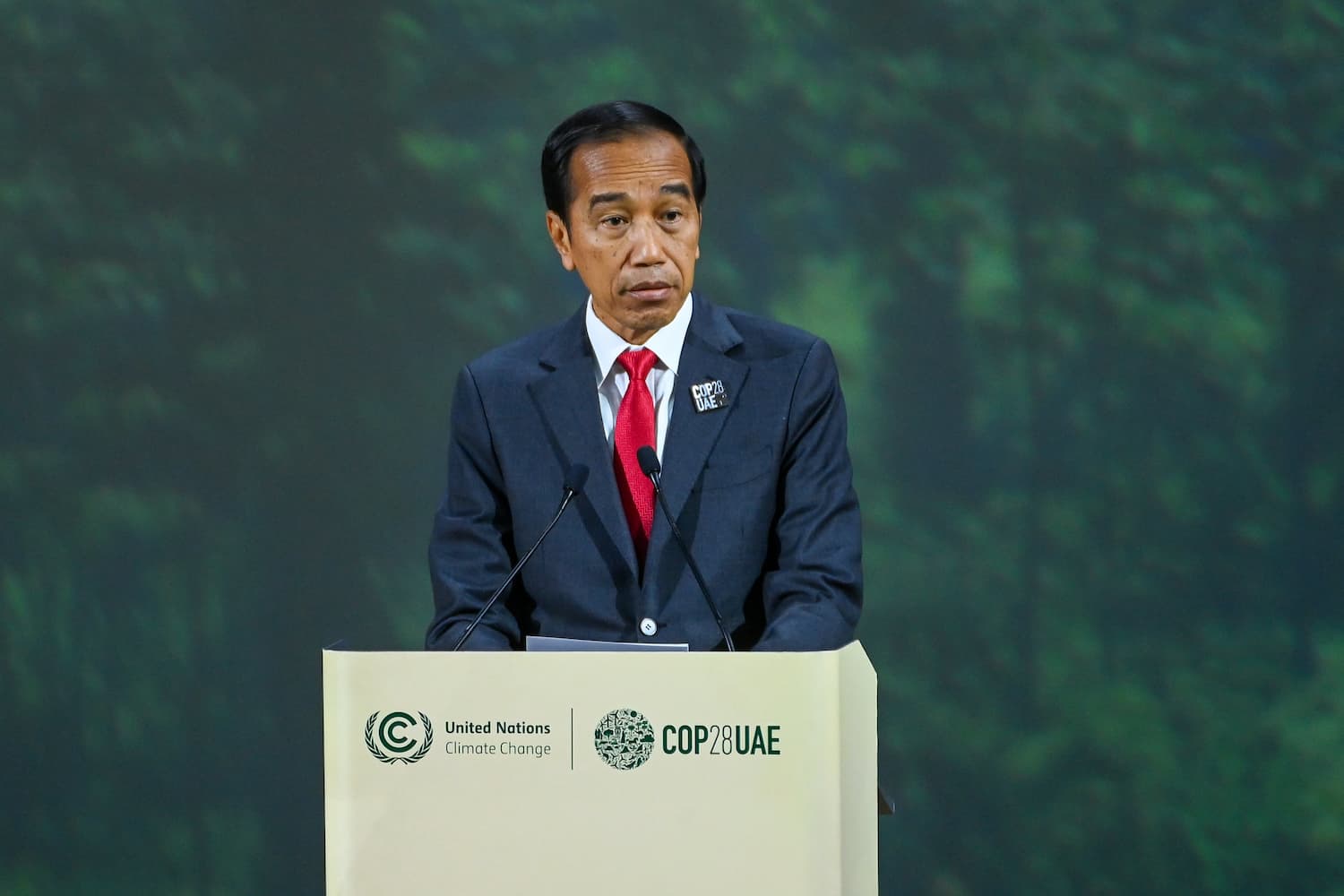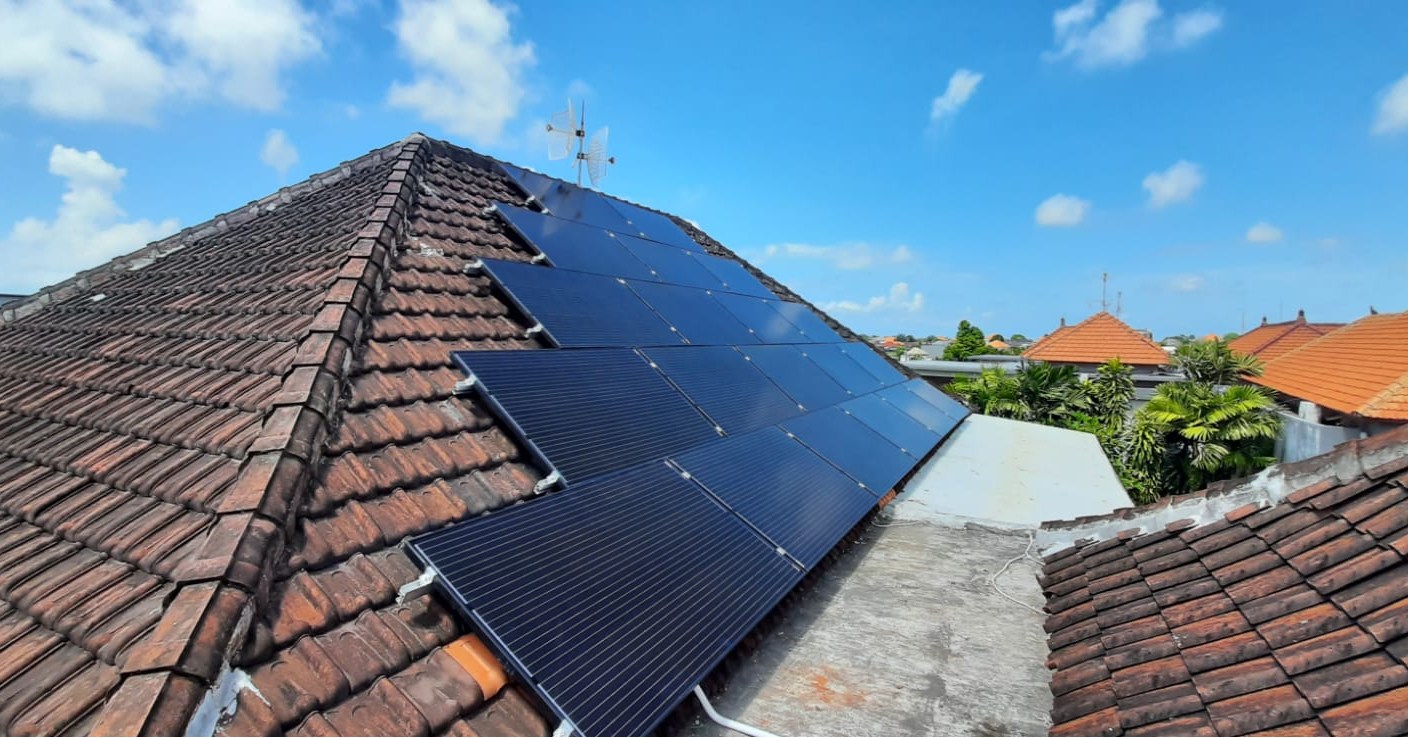Indonesia is about to see the lowest investment realization in renewable energy projects in six years, despite the country’s aim to decarbonize its electricity sector, which experts suggest it is partly because of a lack of discussion to tackle structural and financial barriers.
According to Energy and Mineral Resources Ministry, Indonesia has only attracted US$1.17 billion in new and renewable energy investment as of November, just 65% of the $1.8 billion target set for 2023.
The desired figure is projected to remain unattainable until the end of this year despite the government slashing the target from last year’s $3.91 billion.

Indonesian President Joko Widodo called for international investment in renewable energy during COP28. (Photo: UNclimatechange)
Fabby Tumiwa, the executive director of the Institute for Essential Services and Reform (IESR), said that this year’s figure would be the lowest since 2017, partly due to a scarcity of renewable energy projects auctioned in the last two years, while deployment has experienced contraction as far back as 2020.
“Rising interest rates in the past year have led projects to face reevaluation for their feasibility even though they have reached power purchase agreement (PPA),” he said.
Fabby projects Indonesia would only add 0.97 GW of renewable energy capacity out of the targeted 3.4 GW until the end of this year, putting the country at risk of missing its peak emission target because of stagnant decarbonization of the power sector.
Indonesia has made efforts to increase rooftop solar panel users to enhance its renewable energy mix, targeting up to 2.14 GW by 2030, but only realize 95 MW as of May this year.
Fabby added that the move to push for rooftop solar panel adoption has faced suboptimal progress due to regulatory constraints, including the stalled revision of the Energy and Mineral Resources Ministry’s Ministerial (MEMR) Regulation No. 26/2021 and the licensing policy implemented by state-owned power company PLN.

A rooftop solar installation in Bali, Indonesia. (Photo: Smart Energy)
Ahmad Zuhdi Dwi Kusuma, an industry analyst at state-owned lender Bank Mandiri, said that increased interest rates would affect the internal rate of return (IRR) of investments. Some may choose to delay final investment decisions purely by a financial decision to look for higher yield assets for a short-term gain.
“Renewables projects require medium- to long-term investment, which also means that the return is unpredictable, citing the possibility that the world could still turn away from pursuing renewables,” he said.
Experts have also pointed to other barriers, such as electricity oversupply in the Java-Madura-Bali grid, making it more difficult to sell renewable energy in the region, as well as unfavorable PPA terms, which reduces the bankability of projects.
Gilles Pascual, a partner at consultancy Ernst & Young Singapore, said that investors also encounter challenges due to local content requirements (TKDN) and the lack of domestic manufacturing capacity, significantly escalating project costs.
“Indonesia does not have a mature domestic supply chain. Panels, inverters and a lot of other equipment need to be imported. For now, it is difficult to meet local content requirements,” he said.
He suggested that the government accelerate the negotiation process for power purchase agreement concerning wind and solar projects, while implementing local content requirements more gradually.
Hariyanto, the head of research and electrical tech development at the energy ministry, emphasized that the country could still achieve its goal of promoting renewable energy.
He highlighted the declining levelized cost of electricity (LCOE) as an opportunity to encourage renewable energy development. The global-weighted average LCOE for solar power projects in 2022, for example, declined by 3% from 2021 to $0.05 per kWh.



